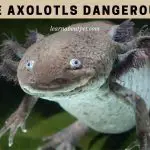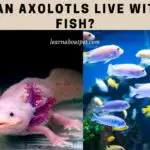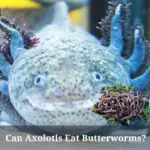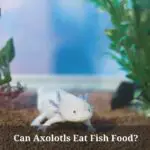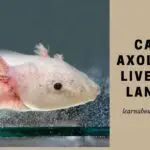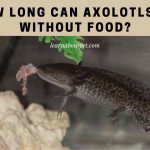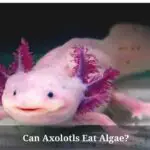Axolotls are very unique pets. In addition to being exotic animals, they are one of my favorite pets, because they are low maintenance and peaceful animals. However, owners often observe that their axolotl has a curled tail, and don’t know what that means.
An axolotl curled tail means that the axolotl is stressed. However, owners have to observe before concluding that the axolotl is stressed. If the axolotl is continuously having a curled tail, it can be possible that they are stressed. If the axolotl curls its tail sometimes, it can mean that they are fine and it is just a regular movement.
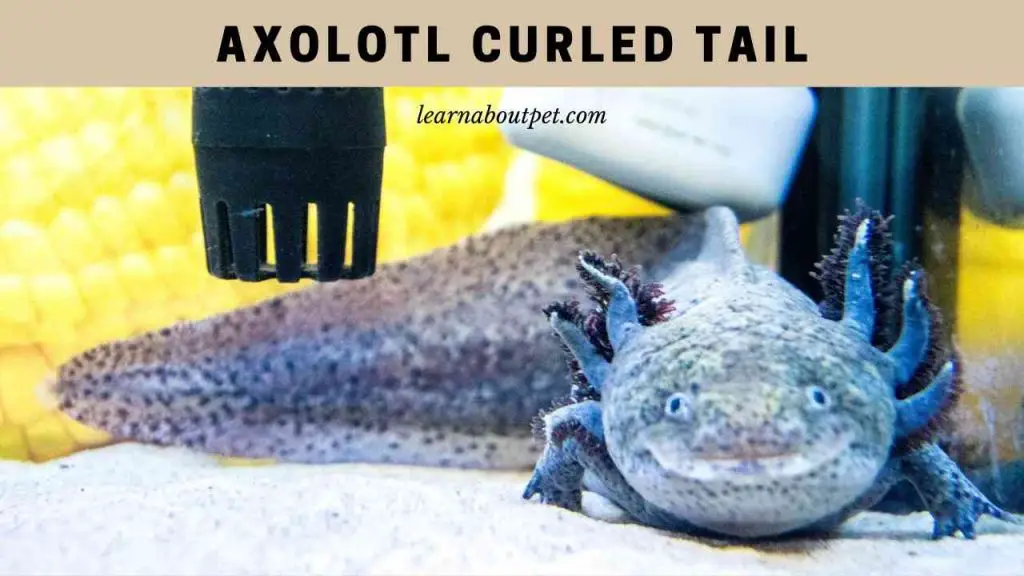
What Does An Axolotl Curled Tail Mean?
An axolotl tail curled can mean that they are stressed. However, sometimes owners see a curled tail occasionally. It can mean that it is just resting rather than axolotl being stressed.
To know if the curled tail means that the axolotl is stressed, the owner should observe the curled tail for a few days.
If the owner has been observing a curled tail for a long time continuously, it can be possible that the axolotl is stressed, but the occasional curling of the tail can’t be said to be a sign of stress.
If the owner is seeing continuous curled tail, and nothing works for them after checking and adjusting the environment, it is best to consult with a vet.
My Axolotl Tail Is Curled, Is He Ok?
Many owners often ask: why is my axolotl tail is curled a bit? If the axolotl is having its tail curled, it can be due to different reasons. If the axolotl tail curl is persistent, it can mean that they are stressed.
If the owner wants to see if their axolotl has its tail curled due to stress, they should observe it for some days. If it persists, it can be due to stress in the tank.
Why Is My Baby Axolotl Tail Curled?
If the Baby axolotl curled tail tip is persistent, the owner should understand that it is stressed due to the environment. The owner should check the environment as soon as possible and fix what is stressing them.
The owner should look for any inadequacies like temperature, lighting, nitrite, ammonia and nitrate levels etc.
Why Is My Axolotl Tail Floating?
An axolotl floating its tail is a common indication of stress. The owner should check the environment of the pet. If the nitrogen levels are fine, what is the ammonia level of the tank? Furthermore, temperature, light are other factors that need to be checked.
Why Is My Axolotl Tail Curling?
Why is my axolotls tail curled? Sometimes axolotls curl their tail due to stress and sometimes it can be just a normal movement. If the tail is being curled for a long time, it can be said that it is a curled tail stressed axolotl, if it happens sometimes, it can be a normal movement. If the owner finds that the axolotl is stressed, the owner should try to assess the factors that may be contributing towards the stress among the axolotls.
Final Verdict – Axolotl Curled Tail
If the owner observes that their axolotl curled tail is persistent, being continuously curled for a few days, it can mean that the axolotl is stressed, however, If the owner feels that the axolotl is just occasionally curling its tail, it can signify, just a normal movement of tail In axolotls.

If the owner finds that the tail of axolotl is stressed due to stress, they should look for factors that may be contributing towards the stress in axolotl. Some of the most common factors that may contribute to stress include tank setting including, water, light, plants, temperature, tankmates, food, etc are of the factors can contribute to increased stress among axolotls.
As a pet lover, make sure to learn about pet more and give your pet axolotl a good and comfortable life!

Welcome to Learn About Pet. My name is Rajkumar Ravichandran and I love all pets, travel, and amazing food. I write about my passion and personal experience caring for multiple pets in this blog! ❤️
Post Disclaimer
DISCLAIMER: THIS BLOG OR WEBSITE, "Learn About Pet", DOES NOT PROVIDE YOU WITH MEDICAL ADVICE AND IS NOT A SUBSTITUTE FOR MEDICAL ADVICE. ALWAYS GET IN TOUCH WITH YOUR PERSONAL VETERINARIAN AND USE INFORMATION HERE AS GENERAL ADVICE.
The information, including but not limited to, text, graphics, images and other material contained on this website are for informational purposes only. No material on this site is intended to be a substitute for professional veterinary advice, food recommendation, diagnosis, or treatment. Always seek the advice of your veterinarian or other qualified health care provider with any questions you may have regarding a medical condition or for pet food related questions.
